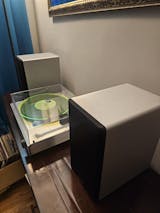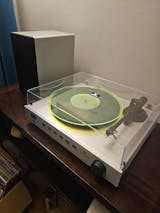History of Vinyl Records: From Shellac to Vinyl
Why aren't shellac documents as usual as plastic documents?
When did the "trend" of plastic take control of?
The remarkable change from shellac to plastic took area out of need. Throughout World War II, the need for shellac escalated throughout the very early years of World War II.
Shellac had not been just used to create documents loaded with sweet-sounding tunes. It was likewise utilized to create dynamites.
When World War II started, the War Production Board, the federal government company in charge of monitoring battle manufacturing under President Franklin Roosevelt, got a 70 percent cut in manufacturing brand-new phonograph documents.
Videotape manufacturing eats regarding 30 percent of the country's supply of shellac. This cut in manufacturing shellac documents was changed with the manufacturing of signal flares and dynamited and the weapons covering layer.
Not just was a significant cut in manufacturing of shellac documents; there was additionally a "phone call to arms"-- if you took place to have documents that were damaged, cracked, or with obsolete tunes, you would certainly have been asked to contribute them for reuse. Individuals were likewise urged to contribute their documents not just to help with weapons but additionally to "increase soldier spirits."
This initiative was widespread, and there were also occasions based on record donations. The William Penn Hotel organized a dance called the "War Records Dance," where the admission rate was 5 disks. By 1943, the American Legion collection blog post counted 25,000 given-away discs.
As shellac was terminated, plastic took the limelight. It had much longer playing times, was lighter, and merely ended up being the brand-new "point.".
Distinctions In Speed: Shellac Vs. Vinyl (78'S Vs. LPs).
Shellac/78'S
The earliest turning rates differed extensively, yet by 1910, most documents were videotaped at around 78 to 80 pm. In 1925, 78.26 rpm was picked as a requirement for mechanized phonographs since it was appropriated for the majority of existing documents and was quickly accomplished by using a standard 3600-rpm electric motor 46-tooth equipment (78.26 = 3600/46).
Therefore these documents came to be called 78s (or "seventy-eights"). When a requirement was created to differentiate the 78 from various other more recent disc document styles, this term did not come into usage until after World War II. Earlier, they were called documents, or when they were required to differentiate them from cylindrical tubes, disc documents.
The periods of 78 RPM recordings have to do with 3 to 5 mins per side, relying on the disc dimension. It usually holds 4 to 5 mins of songs if it is a 12-inch disc. A 10-inch commonly has 3 mins.
The 78 styles discolored the scene by 1955 when plastic took control.
LP's/ Vinyls
LP is short for lengthy play, defined by a rate of 33 1/3 transformations per min and the average plastic rate. Plastics can also vary in dimension, with one of the most normal dimensions being 10in and 12in. The critical distinction is the size of songs that could be positioned on each disk.
At first, 12-inch LPs bet an optimum of 45 mins, split over 2 sides, with 10-inch variations lugging an optimum of 35 mins over 2 sides.
As musicians began to find the possibilities for longer having fun times, this activated the start of the "Album Era" of the 1960s. We started to see the appearance of CDs with numerous LPs, producing a systematic style in a solo cd.
Detecting The Differences: Shellac Vs Vinyl
Shellac is understand to be much heavier, harder, cooler as well as extra stiff. Usually a great deal thicker than normal plastic, however in some cases it's difficult to inform. Not suggested if you desire to play it once again!
Learn more about vinyl records – BLOG – Click
Angels Horn Store:

Bring music to life.
AngelsHorn Mission











Leave a comment